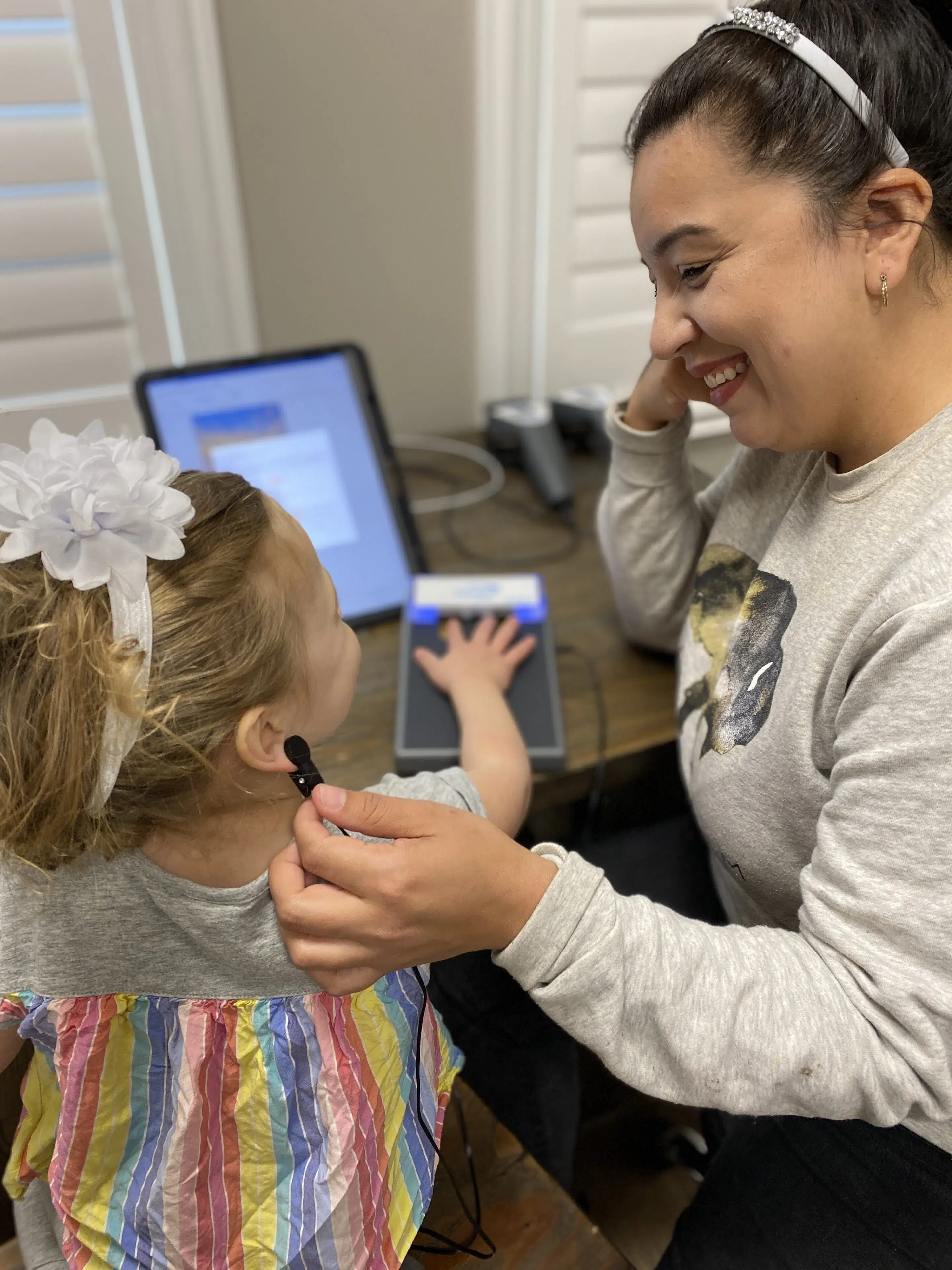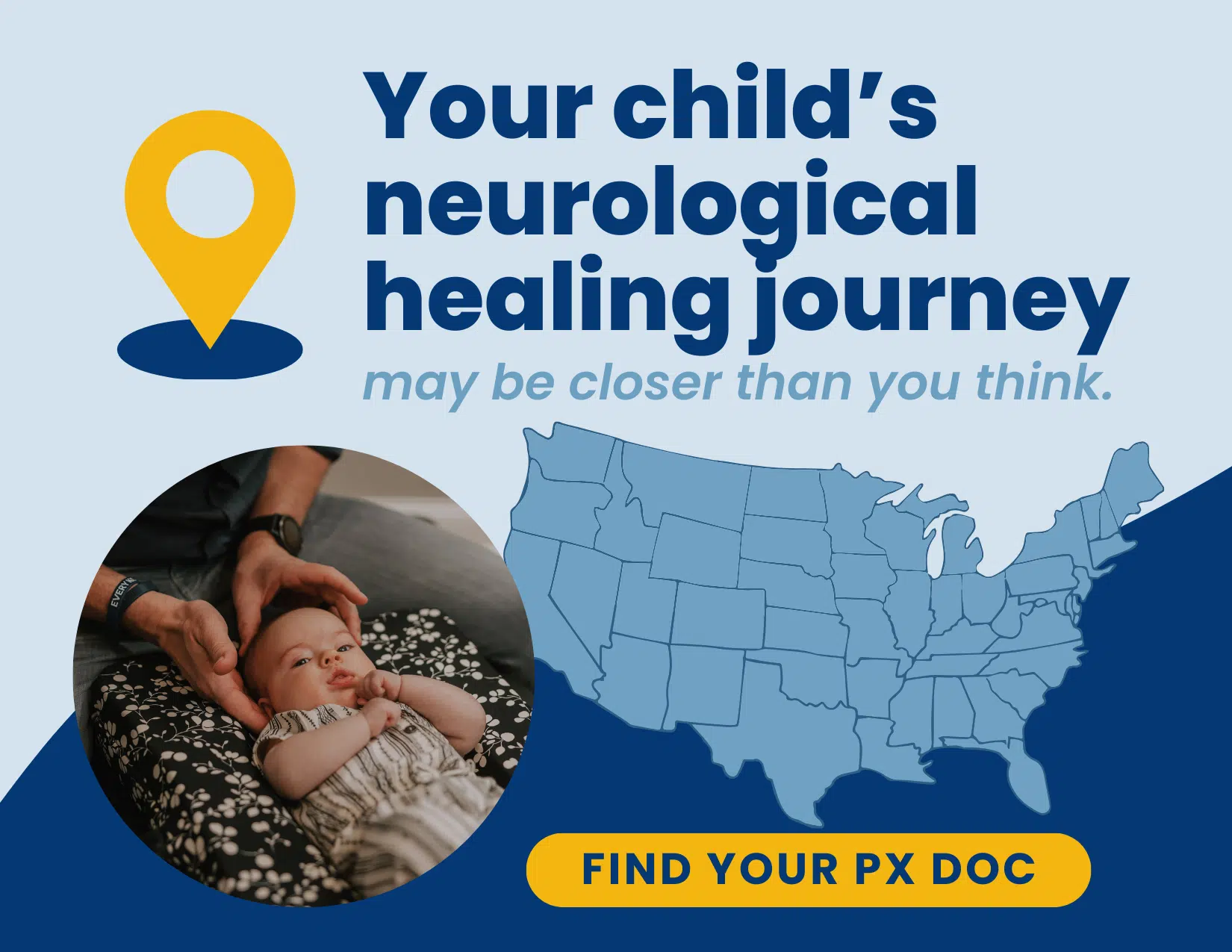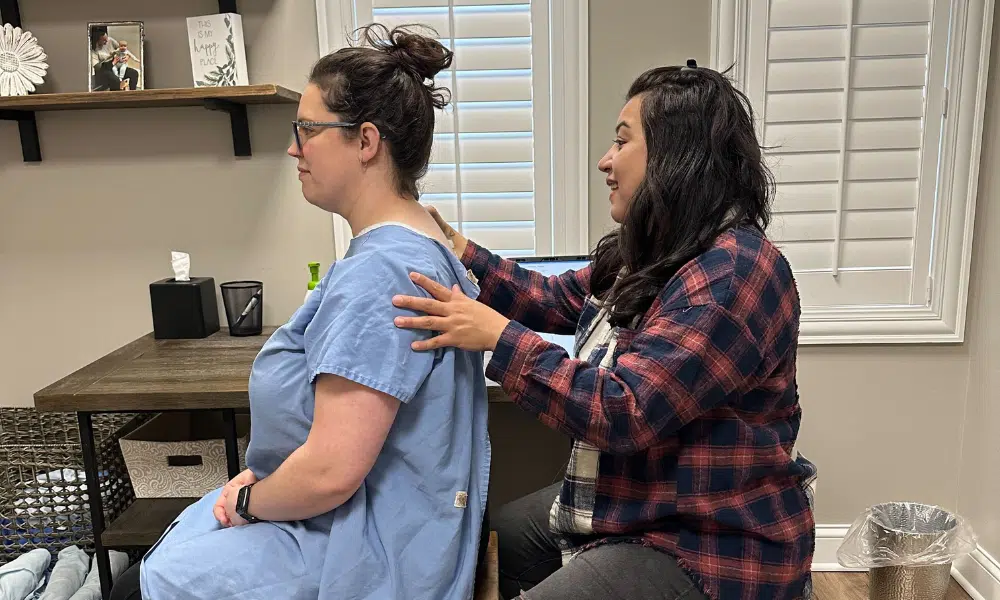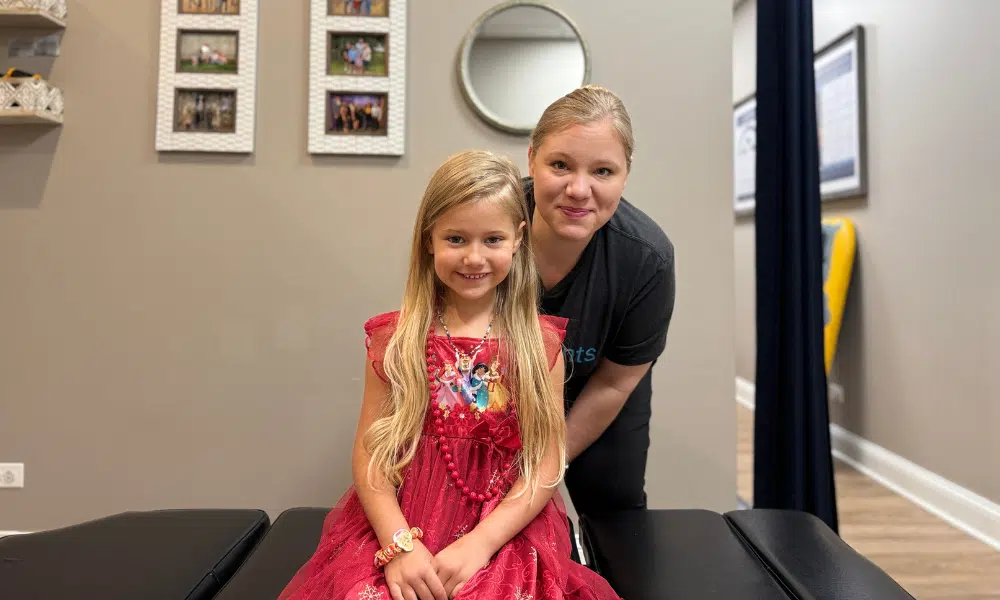While traditional medicine relies primarily on symptoms and looks for obvious pathology on standard exams like blood work, MRIs, and EEGs, our network of trained Pediatric Experience Doctors use an incredible piece of technology called the INSiGHT Scans that accurately assesses the health and function of the Central Nervous System.
When we get into topics like technology and neurology, many of us can get overwhelmed and confused quite quickly, but that’s the beauty and practicality of our INSiGHT Scanning Technology – it’s super simple and easy to understand.
What is the Central Nervous System?
The most critical system that determines whether your child (and your entire family) is healthy or not is the Central Nervous System, or just the ‘nervous system’ for short. It’s made up of three divisions, Sensory, Autonomic, and Motor, that work together to coordinate EVERY internal body function with EVERY movement and with EVERY thought, emotion, behavior, and cognitive function. It’s ‘Air Traffic Control’ for the entire human experience!
Dr. Bruce Lipton puts it this way:
“The function of the nervous system is to perceive the environment and coordinate the function of all other cells.”
That means that while you’ve probably invested quite a bit of time, energy, and resources into trying to get your child’s gut health, immune system, and motor tone (PT, OT, Speech Therapy, etc.) functioning the best you can – your current provider team may have overlooked the one common thread that ties them all together – the nervous system.
When you see the word ‘autonomic’ in this context, it simply means that everything runs on autopilot and happens automatically. You can best think of this in terms of the four (4) things we know healthy babies are supposed to be able to do – eat, sleep, poop, and move.
The autonomic nervous system controls and coordinates all four (4) key health-building functions in your child, and we can measure how well (or not) the nervous system is doing its job with our simple, safe, and reliable INSiGHT Scans!
Basically, the examination and assessment process of the 3 different healthcare approaches breaks down like this:
- Traditional Medicine – chases symptoms and looks for obvious pathology, not function
- Movement-Based Therapies (PT, OT, Speech) – assess muscular or ‘motor tone’ function through various movement assessments, strength tests, etc.
- Pediatric Chiropractic – assesses and determines the function of the nervous system
How Does It Work?
The nervous system is a two-way street.
One set of nerves is called ‘sensory’ nerves that send information and report to the brain and brainstem precisely what’s going on inside the body (internal environment) and outside the body (external environment).
The other set of nerves is more of what is termed ‘motor control’ nerves that send signals out from the brain and spinal cord and tell the various parts of the body what to do, when to do it, how to do it, etc.
Because neurological communication within the autonomic nervous system has to do this vitally important job for 37.2 million cells in the human body, things need to happen fast and have absolute clear lines of communication. We were designed to operate well past 5G long before it was invented, and we certainly can’t have our kids operating at dial-up speeds.
And because a child’s brain (nervous system) doubles in size during its first year of life and continues growing and developing at that rapid pace for the first 3-7 years of life… making sure this system is working at full function is simply the most important exam and assessment any pediatric provider could ever perform for your child.
So it’s not even close – an INSiGHT Scan that tells you exactly how your child’s brain and nervous system are functioning and communicating is far more valuable than knowing where they sit on the height and weight chart in your pediatrician’s office.
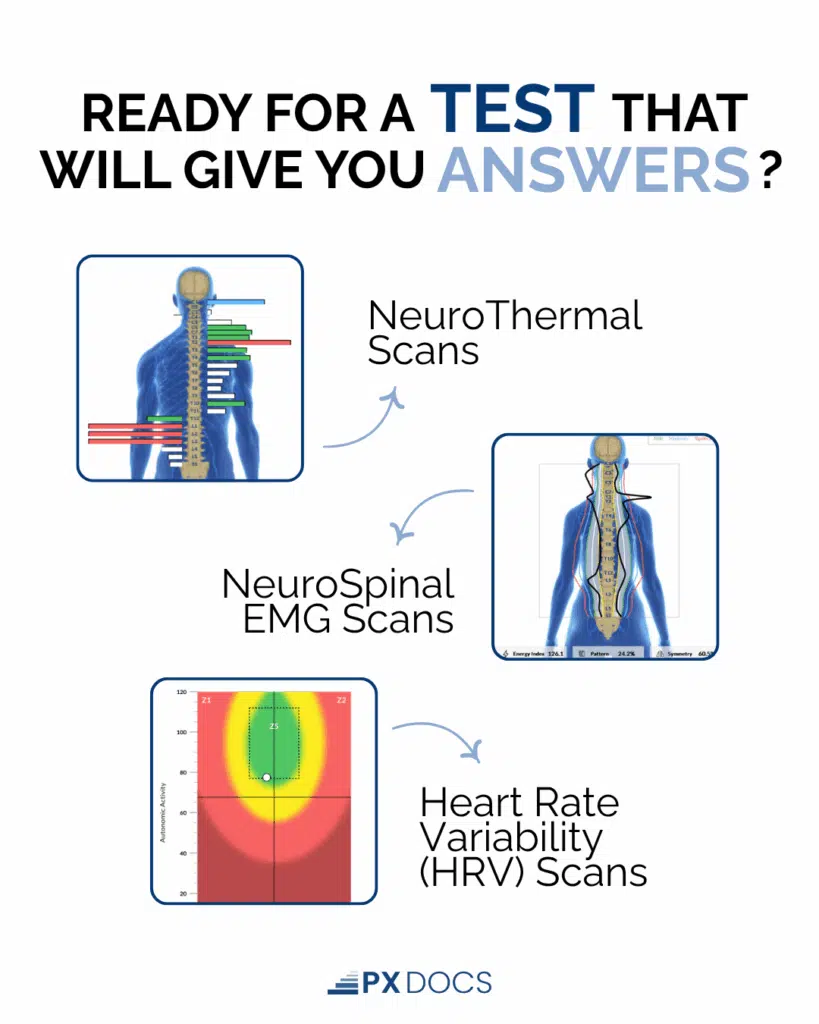
What Do the INSiGHT Scans Look For?
The INSiGHT Scans are about finding, tracking, and understanding if subluxation and dysautonomia are present. And if they are, we need to know two things about them:
- How significant or severe (mild, moderate, severe, or intensive)?
- Where within the neurospinal system are things primarily located (tracking, targeting)?
When too much tension and stress is stuck in one specific area of the neurospinal system, it helps us better understand why certain symptoms and conditions may be present. Additionally, running the INSiGHT Scans as part of a wellness checkup and before any symptoms may be present helps us predict and get ahead of potential trouble later.
Think of the neurospinal system as the fuse box in your home. While our nervous system is quite a bit more intricate and complex than that, at its core, many of the sensory and motor nerves function similarly. In our office, we use the Neuro Fuse Chart to help us better track and locate where and what kind of trouble the subluxation and dysautonomia may be causing!
What is Subluxation & Dysautonomia Again?
While you can find more info on subluxation and dysautonomia by clicking on those hyperlinks (if reading this digitally), they cause the nervous system to suffer from three (3) major issues:
- Stuck stress, tension, spasm, etc.
- Lack of balance (more on this later) and coordination
- Disorganization and dysfunction
Some of the signs and symptoms of your child’s nervous system is stressed out, tense, and stuck in sympathetic fight-or-flight mode are things like:
- Colic and frequent crying in an infant
- Excessive tantrums and meltdowns in a toddler or preschool-aged child
- Motor and speech delays
- Sensory processing and emotional regulation challenges
- ADHD and anxiety type challenges later on in school-aged children and teens
What’s always been fascinating about using INSiGHT Scans in our Pediatric + Family Practice is that you can see the exact stuck subluxation (stress) patterns in infants as you do in older children and teenagers. While it’s called something different in each age group, the actual root cause behind the challenges is nearly the same – a stressed out, wound up, out-of-balance nervous system.
Sadly most pediatricians dismiss most neurodevelopmental and sensory challenges as “normal” and tell parents still today things like, “don’t worry, they’ll grow out of it.” Well, we now know that for most kids, those symptoms and conditions are obvious signs of trouble brewing in the nervous system, something PX Docs call The Perfect Storm.
Now that we understand why the INSiGHT Scans are so important and what they are looking for… let’s dive into each of the three (3) individual scans!
NeuroThermal Scans
This is the first scan each PX Doc office will run, and we can run this scan on everyone from a 1-day old infant to mom and dad in a matter of minutes.
The main thing the NeuroThermal Scans help us find is the regional effects of subluxation and dysautonomia. That means the Neuro Fuse Box Chart discussed and shown above is very helpful in interpreting this scan.
Since the core functions of the autonomic nervous system are to coordinate and regulate the function of the digestive system, immune system, hormones, and so forth… this scan helps us really understand what’s going on in our patients who are struggling with things such as colic, reflux, constipation, chronic ear infections, allergies, adrenal dysfunction, and sleep disorders.
The scan image below is a NeuroThermal Scan of a child struggling with virtually all those conditions of the neuro-gastric-immune complex and anxiety.
Your local PX Doc will explain each scan finding in more detail, but the three (3) things we don’t like to see in these scans are:
- Green, blue, and red bars on the top half NCM graph– indicates that stuck, tension, and sympathetic dominance component of the subluxation.
- Tons of ‘back and forth’ or ‘tug of war’ type tracking and tracking on the bottom summary graph – this indicates dysautonomia and tension throughout the neurospinal system.
- The DTG bars along the sides of the summary graph (bottom half) are inside the black lines and blue – this indicates the subluxation and condition are becoming more chronic.
NeuroSpinal EMG Scans
This particular scan is vital for us to help our Perfect Storm kids best. It serves as the most important form of testing we can do when conditions like Autism, Asperger’s, Sensory Integration Disorders, ADHD, and Anxiety are being investigated.
That’s because each of these neurodevelopmental and neurosensory challenges is rooted in stuck tension, altered tone, and exhaustion of the neuromotor system. Most every parent of a spectrum or sensory child is familiar with the word ‘tone’, having worked with outstanding professionals like Pediatric PTs, OTs, and Speech Therapists.
Neurological and tone challenges are a big deal, as motor function and development determine brain function and development. That means – if the EMG scan detects patterns of stuck tension and imbalance, the brain is almost certainly stuck in sympathetic (fight or flight) tone and also struggling with an imbalance between its core functions of regulating emotions, behavior, learning, and memory.
There are three (3) common findings with pediatric EMG scans, and we’ll briefly describe them here and then show examples of each type below:
- Raging Bull – this is a child whose nervous system is stuck on the ‘gas pedal’ and entirely sympathetic dominant, leading to challenges with things such as hyperactivity, impulsivity, anxiety, difficulty sleeping, and so forth.
- Drunken Bull – this scan finding most often correlates with a child struggling with coordination, focus, reading comprehension, communication, etc.
- Raging Drunken Bull – as a child gets older, often they’ll end up with both scan patterns and signs and symptoms of each.
The most exciting thing about Pediatric Chiropractic is that we can see changes in a child’s EMG Scans quickly because their nervous system is still learning to grow and adapt at such a fast pace. Their brains and bodies are growing and developing rapidly; it’s quite incredible. But that also means that when subluxation gets into the neuromuscular system (as shown on EMG), it can wreak havoc and alter their development for years to come.
Diving a bit deeper into this particular scan, our INSiGHT EMG Scans also use a 3-step scoring system that allows us to really understand what’s going on with that child’s neuromotor system and, thus, overall brain and neurodevelopment.
Here are the 3 scores you’ll see on your child’s EMG Scan and a quick explanation of what they mean, and then we’ve provided some examples of EMG scans as well:
- Total Energy Score – this score tends to go way up in a child who’s wound up and stuck in sympathetic mode, and therefore a high score here is most often seen with our ‘Raging Bull’ cases struggling with things like anxiety, behavior and sleep issues, and so forth
- Pattern Score – this is a significant score to the overall neurological tone, and a low score here indicates a child who’s likely struggling with emotional dysregulation, focus and concentration challenges, postural exhaustion and a weak core, and so forth
- Symmetry Score – this score measures the balance between the right and left sides of the neurospinal system, which is crucial to be then sure that there is balance in overall brain function and coordination
Raging Bull (High Total Energy) EMG Scan:
The #1 thing that signifies this child’s scan as a ‘Raging Bull’ scan is the excessively high Total Energy number, shown in the bottom left corner (413.8). The “normal” score should be 100. This means her entire neuromotor system is fully locked into fight-or-flight tone and interfering with her neuromotor development (standing, walking, etc.), sleep, behavior, emotions, digestion, and more. Interestingly, this child is also a ‘Drunken Bull’ as shown by the other two low scores.
Drunken Bull (Low Pattern + Symmetry) EMG Scan:
For this child, her Pattern score being low (24.2) signifies she’s struggling with ‘Drunken Bull’ type neurological challenges – emotional regulation, sensory processing, motor coordination, digestion, and more.
Heart Rate Variability (HRV) Scans
These scans are beneficial at getting a broader picture of a patient’s neurological health, telling us whether their autonomic nervous system is healthy, balanced, and fully charged… or stressed out, imbalanced, and worn out.
The key word here is ‘variability’ because that is indeed the number one marker of good neurological health: the ability to be adaptable and resilient. Adaptability is the key to good health, whether talking about gut and immune health or behavioral, emotional, and cognitive health.
Every child will encounter bacteria, viruses, physical injuries, environmental toxins, and emotional challenges almost daily. So what we know about good health is that it’s not determined by avoiding or trying to hide from these things but by being able to adapt and overcome them.
Many parents of spectrum and sensory kids often list one of their top goals for care to help their children be more ‘flexible’ and less dependent on strict, consistent routines. The HRV Scan is, therefore, a great one to help show why that is not the case for most kids starting out, but then it improves over time as the child gets neurologically-focused adjustments.
The vast majority of HRV scans in our office look like the sample scan below for kids and adults alike. The white dot to the lower left as it indicates two very common findings that are the result of subluxation and dysautonomia:
- Shifted left – meaning the patient is stuck predominantly in sympathetic fight-or-flight mode and/or has an exhausted parasympathetic nervous system and vagal tone issues
- Shifted low – indicating the patient has lower ‘reserve capacity’ and adaptability, or “low energy”
As we can see with so many HRV scans, this patient’s anxiety builds throughout the short 3-minute exam, as their heart rate (red line) and galvanic skin response (blue line) build and increase over time goes on. Now imagine dealing with that stress build-up when trying to concentrate in school or fall asleep. Those are just two common examples of where subluxation and sympathetic dominance (dysautonomia) show up and cause daily struggles in the lives of so many kids and families!
With the high-stress, high-demand ‘perfect storm’ world that most families are stuck in today, they often feel ‘wound up and worn out’ at the same time!
Just think of it like a toddler who skipped their nap on a busy day… by the time evening rolls around, you’ll have a fully exhausted child, throwing tantrums, not listening, and having a tough time.
In the same way that an infant doesn’t really grow out of colic but instead often grows into sensory and spectrum challenges… the same is true for the stress and tension seen on HRVs throughout the family. We don’t grow out of tantrums and behavior issues; we grow into ADHD, anxiety, and even depression.
The HRV Scans are the most helpful in sorting out what’s going on with our patients looking for drug-free help with mental and emotional disorders, sleep, energy, and so forth. Without these scans, we’d be chasing symptoms like most other medical approaches.
The chart below shows the absolute life-transforming changes in those areas that our patients experience once under neurologically-focused chiropractic care. We can track these changes along with functional improvements on their HRV Scans!
Those changes are just truly incredible!
Millions of Americans take multiple medications to try and get some sleep, mood regulation, and decrease their pain + tension… and we can get all of that and more in just minutes with neurologically-focused chiropractic adjustments! Even better, no side effects!
Putting It All Together
While your local Pediatric Experience Doctor will take you through each scan individually, perhaps the most important aspect of the INSiGHT Scans is being able to put them all together and get a full picture of what’s going on with your child’s nervous system and overall health!
The INSiGHT Scans do exactly what they’re named for – give us insights and an understanding of the most crucial aspect of your child’s health in ways no other health practitioner can.
The nervous system truly is the ‘mom’ of the entire body, keeping everything and everyone on track at all times! And just like quite a few moms, it can get wound up and worn out.
But it truly doesn’t have to be that way! Your PX Doc will put together (or already has) a fully personalized and customized Care Plan just for you. With each adjustment during that Restoration or Wellness Care Plan, you’ll see the stuck stress and tension leave your child’s body and the calm, relaxation, and healing capacity kick in!
Please take the time to watch the video below as Dr. Matt dives into further explanations and visuals of how this phenomenal technology works.
We can’t wait for you to Experience Miracles that only this kind of chiropractic can bring to the table! God bless, and be well!

